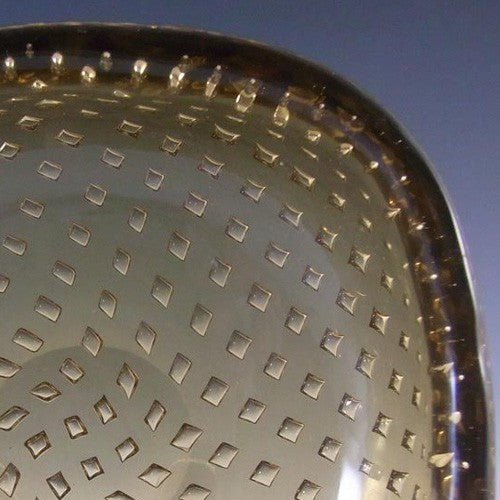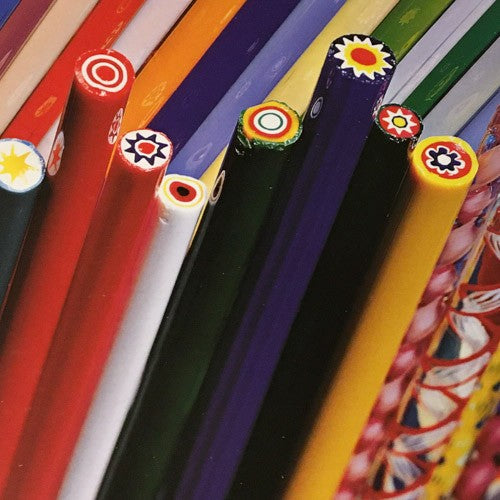Glass with multicoloured hues, translucent, with opaque veins, obtained by adding to the molten mass, say colourless transparent glass, a pigmented mixture based on different oxides (generally copper, iron, cobalt and tin) and metallic silver that also contains a reducing components (carbon or whatever); the mixture is partially blended with the molten mass and the whole is then mixed after some time.
The colouring effect is given both by the dissolution of the metallic oxides in the glass and by the formation of small colloidal particle of metallic silver and copper, smaller than the microcrystals.
This type of glass was already applied in Murano in the XVI and XVII centuries, but the use was later abandoned so much so that its formula got lost.It was only in 1846 that the industrialist Lorenzo Radi , after a laborious search, managed to lay his hands on it again, and used it to produce articles, or blown in flat panes as complements of costly furniture.
Venini & Co . uses it, on the design of Napoleone Martinuzzi , to finish mouths and handles of large vases of for centre-table figures. In the early nineteenth century calcedonio wasn't used a great deal and this term has now come to mean a material consisting substantially of a mixture of pastes that have already been melted in two or three colours.
It is now rare to come across true calcedonio, like that executed by the Cenedese firm in the 60s, purely for research. Nowadays the calcedonio glass is performed by Andrea Tagliapietra , Dino Rosin ; Vetreria artistica Zanetti .





Hinterlasse einen Kommentar
Alle Kommentare werden vor der Veröffentlichung geprüft.
Diese Website ist durch hCaptcha geschützt und es gelten die allgemeinen Geschäftsbedingungen und Datenschutzbestimmungen von hCaptcha.